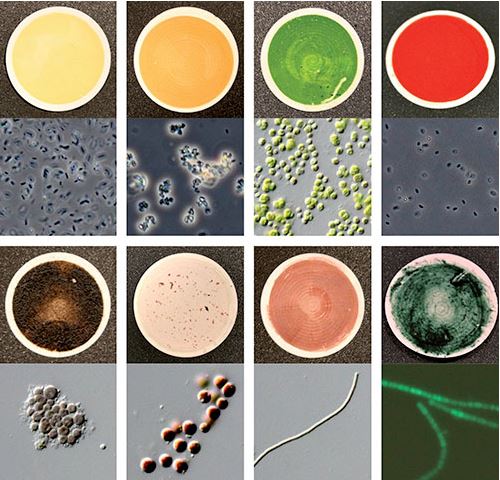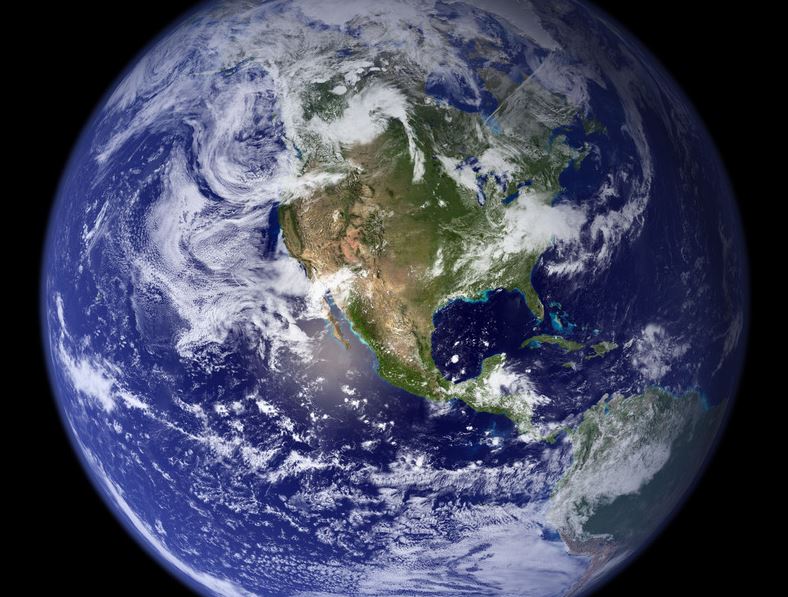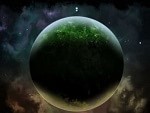The quest for alien life on other planets could be improved using a system of colors created by a team of German and American researchers. Their colorful catalog contains reflection signatures of life forms on Earth from the most extreme environments, that might be found on exoplanets.
The scientists believe their new database and research, which has been published in the academic journal Proceedings of the National Academy of Sciences (citation below), give us a better chance to determine whether there are others out there.
According to the Max Planck Institute, astronomers are set to enter a new phase of research on exoplanets, working with biologists to formulate search strategies for life forms on these distant planets. Efforts so far have concentrated on indirect biosignatures, such as byproducts of life that could be detectable in the target planet’s atmosphere.

Some of the 137 microorganism samples used to measure biosignatures for the catalog of reflection signatures of Earth life forms. (Image: Cornell University)
However, if a distant planet were dominated by one type of life form, a more direct and effective form of detection might be possible – one based on light reflected by that type of organism, taking on a characteristic tint in the process.
Lisa Kaltenegger, professor of astronomy and director of Cornell University’s new Institute for Pale Blue Dots, which studies extrasolar planets and models habitable rocky exoplanets, said:
“This database gives us the first glimpse at what diverse worlds out there could look like. We looked at a broad set of life forms, including some from the most extreme parts of Earth.”
An exoplanet is a planet which orbits a star outside our own solar system.
The interdisciplinary team also includes biologists Lynn Rothschild, Ryan Kent and Ivan G. Paulino-Lima, from the NASA Ames Research Center, and lead author, astronomer Siddharth Hegde, of the Max Planck Institute for Astronomy in Heidelberg, Germany.
In the paper, the scientists explain:
“Much of the history of life on Earth has been dominated by microbial life. It is likely that life on exoplanets evolves through single-celled stages prior to multicellular creatures.”
“Here, we present the first database for a diverse range of life – including extremophiles (organisms living in extreme conditions) found in the most inhospitable environments on Earth – for such surface features in preparation for the next generation of telescopes that will search for a wide variety of life on exoplanets.”

In this NASA composite satellite image, you can see a greenish tint in the reflected sunlight, a direct signature of plant life present on our planet’s surface. (Image: Max Planck Institute for Astronomy)
To identify the tint of Earth, astronomers from other galaxies, such as Andromeda, might measure light reflected off the surface of a planet, as sunlight shimmering from out planet’s vegetation reaches their telescopes.
In the same way, astronomers on Earth can see pigmentation on exoplanets and determine their compositions by looking at their color.
Prof. Kaltenegger said:
“On Earth these are just niche environments, but on other worlds, these life forms might just have the right make to dominate, and now we have a database to know how we could spot that.”
The scientists have gathered the culture of 137 life forms found on Earth, from Bacillus (bacteria) collected at the Sonoran Desert to Halorubrum chaoviator (organisms that thrive in extreme conditions) found at Baja California in Mexico, to Oocystis minuta (type of algae) gathered from an oyster pond at Martha’s Vineyard.
All the 137 types can be found at biosignatures.astro.cornell.edu.
Hegde, one of Kaltenegger’s former doctoral students and an incoming Cornell research associate, said:
“Our results show the amazing diversity of life that one can detect remotely on exoplanets. We explore for the first time the reflection signatures of a diversity of pigmented microorganisms isolated from various environments on Earth – including extreme ones – which will provide a broader guide, based on Earth life, for the search for surface features of extraterrestrial life.”
Citation: “Surface biosignatures of exo-Earths: Remote detection of extraterrestrial life,” Siddharth Hegde, Ivan G. Paulino-Lima, Ryan Kent, Lisa Kaltenegger, and Lynn Rothschilde. Proceedings of the National Academy of Sciences. Published March 16, 2015. DOI: 10.1073/pnas.1421237112.

